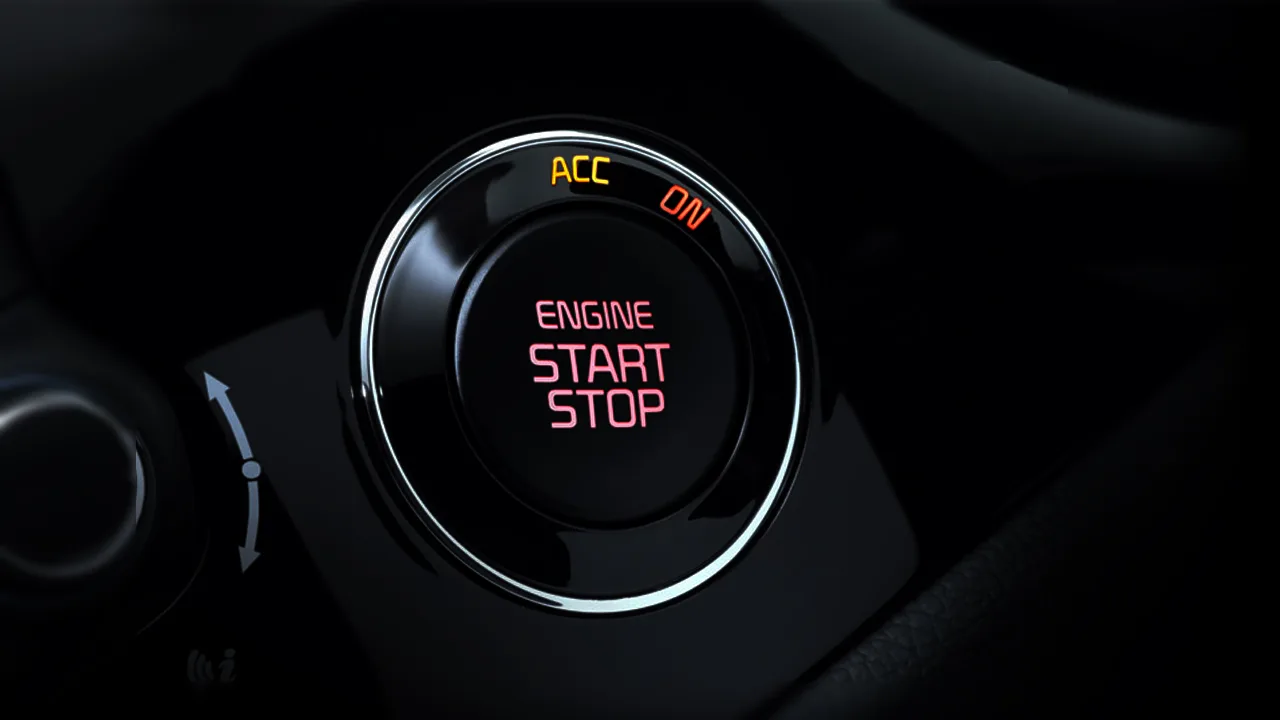Idle start-stop technology, also known as start-stop system or stop-start system, is a feature in modern automobiles designed to enhance fuel efficiency and reduce emissions by automatically shutting off the engine when the vehicle is stationary and restarting it when the driver is ready to move again. This technology has become increasingly common in both gasoline and diesel-powered vehicles. We will explore how idle start-stop technology works, its components, benefits, and potential considerations.
Components of Idle Start-Stop System:
Start-Stop Control Unit:
At the heart of the idle start-stop system is the control unit. This sophisticated electronic module oversees various parameters to determine when to shut off and restart the engine. It receives inputs from sensors and interfaces with other vehicle systems.
Battery and Alternator:
A robust battery and alternator are crucial components. The battery provides power for electrical systems when the engine is off, and the alternator recharges the battery when the engine is running.
Sensors:
Various sensors monitor critical data such as engine temperature, battery state of charge, brake pedal position, accelerator pedal position, and more. These sensors inform the control unit about the vehicle’s status.
Starter Motor:
The starter motor is responsible for restarting the engine. It needs to be more robust than traditional starters to handle the frequent starting cycles associated with idle start-stop technology.
Crankshaft Sensor:
This sensor detects the place of the crankshaft, enabling the control unit to synchronize the engine’s restart precisely.
Transmission and Carry (for manual transmissions):
In vehicles with manual transmissions, the system interacts with the transmission and clutch to restart the engine smoothly when the driver engages the clutch.
Idle start-stop technology in car – How it Works
Idle Start-Stop is a fuel-saving feature in automobiles that automatically shuts down the engine when the vehicle is stationary, such as at traffic lights or during short stops. When the driver releases the brake pedal, the system quickly restarts the engine, allowing for smooth acceleration. This technology helps to reduce fuel consumption and emissions by eliminating unnecessary engine idling. It runs on sensors that monitor a variety of parameters, such as brake pedal status, engine temperature, and battery charge. If these conditions are met, the system temporarily shuts down the engine to improve fuel efficiency and reduce environmental impact while maintaining the driver’s experience.
Vehicle Comes to a Stop:
When the vehicle comes to a complete stop, and certain conditions are met (such as the driver applying the brakes and the engine at the correct operating temperature), the idle start-stop system activates.
Engine Shutdown:
The control unit receives signals from sensors indicating that the vehicle is static and the engine can be safely off. The control unit then commands the engine to shut down.
Power to Electrical Systems:
With the engine off, power for essential electrical systems (lights, air conditioning, infotainment, etc.) comes from the vehicle’s battery. The battery is to handle these loads without compromising its ability to restart the engine.
Monitoring Parameters:
While the engine is off, the control unit continues to monitor various parameters, including battery voltage, engine temperature, and pressure on the brake pedal.
Restart Preparation:
When the driver releases the brake pedal or depresses the accelerator pedal (depending on the vehicle), the control unit prepares to restart the engine.
Engine Restart:
The control unit engages the starter motor, restarting the engine swiftly and smoothly. In vehicles with automatic transmissions, the transmission is engaged seamlessly, while in manual transmissions, the driver typically needs to engage the clutch.
Ready to Move:
With the engine restarted, the vehicle is ready to move, and the process repeats when the car comes to another stop.
Benefits of Idle Start-Stop Technology:
Fuel Efficiency:
One of the primary advantages is improved fuel efficiency by reducing the time the engine spends idling, especially in urban traffic or during extended stops, and the system conserves fuel.
Emissions Reduction:
Lowering the amount of time a vehicle spends idling also results in reduced emissions. It aligns with environmental regulations and contributes to lower overall carbon dioxide emissions.
- Audi GT50 Concept: A Loud Reminder of Why Car Enthusiasts Fell in Love With Audi
- Nearly 30% of UK Drivers Believe Car Tax Should Be Based on Mileage — Survey
- Why Planes and Boats Escaped the Luxury Tax But Cars Didn’t
- Australia’s Headlight Confusion: Authorities Warn Drivers After Viral $250 Headlight Rule Goes Wild Online
- 2025 Hyundai Venue Facelift Launched in India – Full Details, Variants, and Price
Extended Battery Life:
Although the battery experiences more frequent discharge and recharge cycles, modern idle start-stop systems mitigate adverse effects, leading to minimal impact on battery life.
Reduced Noise Pollution:
When the engine is off, there is a reduction in noise pollution, contributing to a quieter and more comfortable environment, especially in urban settings.
Compliance with Regulations:
Idle start-stop technology helps automakers meet stringent fuel efficiency and emission standards imposed by regulatory authorities worldwide.
Considerations and Potential Drawbacks:
Battery Wear:
The increased demand on the vehicle’s battery for restarting the engine can lead to accelerated wear. However, manufacturers design batteries for durability in idle start-stop systems.
Driver Adaptation:
Some drivers may find the initial adjustment to the engine shutting off at stops unusual. However, most systems are to be seamless and unobtrusive.
Compatibility with Certain Driving Conditions:
The benefits of idle start-stop may be more pronounced in urban traffic with frequent stops and starts, in highway driving, or in situations where the vehicle doesn’t come to a complete stop as often, and the impact may be less significant.
System Reliability:
The idle start-stop system relies on various components working harmoniously. If a component malfunctions, it affects the system’s reliability and overall performance.
In conclusion, idle start-stop technology is a notable innovation aimed at improving fuel efficiency, reducing emissions, and aligning with environmental standards. As manufacturers continue to refine and implement this technology, it has become even more prevalent across various vehicle types, contributing to a more sustainable and efficient automotive landscape.
